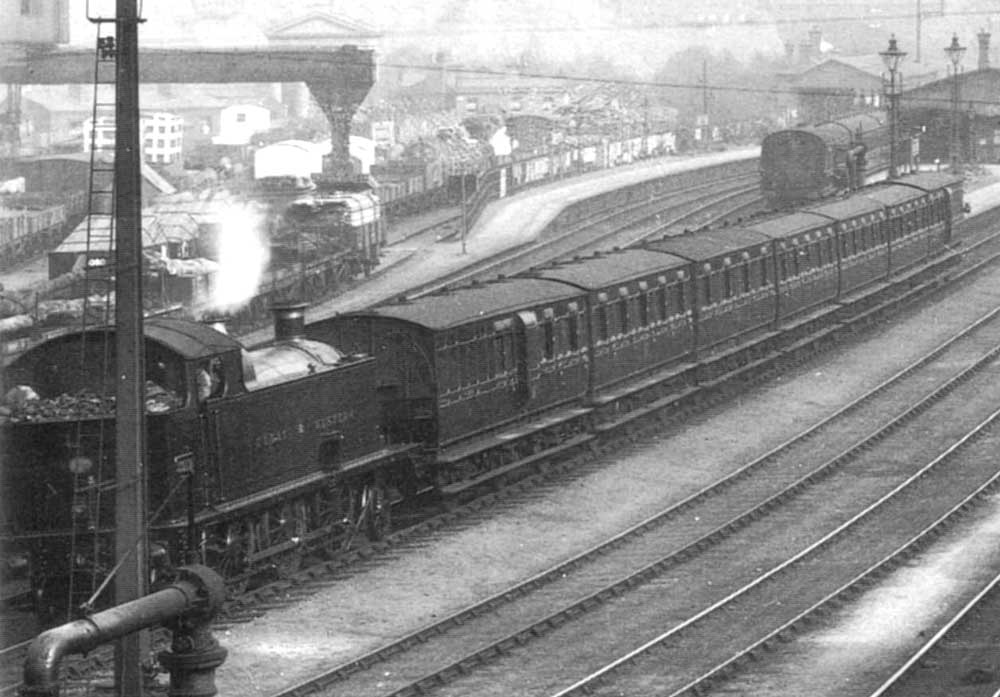 |
|
GWR Route: Banbury to Wolverhampton
Hockley Station: gwrhd692c
 |
Close up of image 'gwrhd692' showing an unidentified GWR
2-6-2T Prairie locomotive running bunker first from platform 3 at Hockley
station. In the early 1900s there was a need for more powerful suburban tank
engines for local passenger services in the Birmingham area and therefore
between 1907 and 1910 twenty 2301 class 0-6-0 tender goods engines were
converted to 2-6-2T locomotives. The conversions had a standard No 5 boiler
designed to operate with a 200 lbs boiler pressure, which produced a tractive
effort of 20,155 lb (power group B category) and their axle weight limited them
to Blue or Red routes. Side tanks with capacity for 1,500 gallons of water were
fitted as part of the conversion. These tanks had a distinctive access hole to
allow maintenance. All the class were superheated between April 1914 and July
1917, had their smokebox slightly extended and bunkers modified to increase
coal capacity. At the same time some had their boiler pressure dropped to 165
lb, which reduced their tractive effort to 16,625 lb (power group A category),
at a later date this pressure was increased to 185 lb. When more powerful
2-6-2T Prairie locomotives became available, the locomotives of the 39xx class
were withdrawn (between August 1930 and November 1934), but those destined to
survive past May 1932 were fitted with Automatic Train Control (ATC).
The six wheeled carriage stock is in the unlined Lake
(brown) livery, which the Great Western Railway used between 1912 and 1922.
These coaches dated back to the 1890s and were gas-lit. All the coaches appear
to be similar length (typically 31 foot long) with a single arc roof. It was
normal for main line coaches of this period to have six wheels, while four
wheeled coaches were used on branch line services. The first and last coaches
appear to be brake thirds (diagram T); with two third class compartments, a
central guards compartment with side look outs and a luggage compartment. The
coaches with five compartments were probably either built as a diagram S third
class coach or a diagram U first / second / third composite coach, while the
one coach with four compartments is probably either a diagram R2 first class
coach or was built as a diagram U9 first / second composite coach. In 1910 the
Great Western Railway abolished second class travel and the second class
compartments were downgraded to third class. Between 1911 and 1932 the Great
Western Railway gradually replaced these old coaches with modern
electrically-lit four coach sets, which were originally termed D sets, although
by 1937 these four coach non-corridor sets were termed B sets (note - outside
Birmingham this term was used to define close-coupled pairs of non-corridor
coaches). By the mid 1930s only a few six and four wheeled coaches were
retained; paying their way as workman train stock or converted into either;
service or Camp coaches.
Robert Ferris
 back back

|
